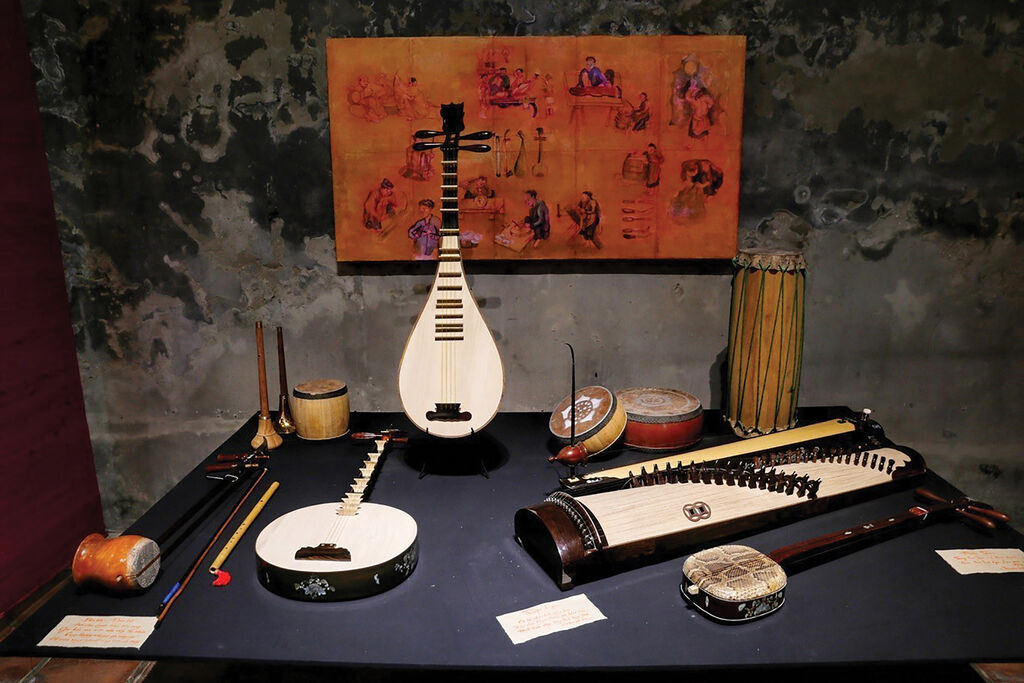 |
| Folk musical instruments made by Dao Xa craftsmen are displayed at an exhibition in Hanoi__Photo: Tuan Duc/VNA |
Musical instruments of Dao Xa village are handcrafted and have their own unique characteristics and can be identifiable by their look, sound and touch, according to craftsman Dao Anh Tuan - the owner of a musical instrument workshop.
Music is an essential part of the culture and each country has folk musical instruments representing its cultural identity. Dao Xa village is the only place in Vietnam where folk musical instruments are made by hand. Let’s explore the traditional musical instrument-making village of Dao Xa which is considered a living museum of handmade folk musical instruments.
History of the traditional craft
Located in Dong Lo commune of Ung Hoa district, about 45 kilometers south from the center of Hanoi, Dao Xa village is renowned for handmade folk musical instruments, from dan tranh also known as dan thap luc (a 16-chord zither), dan ty ba (a pear-shaped guitar with four strings), dan bau (a monochord or a single-stringed zither), dan nguyet (moon-shaped lute with two strings), dan nhi or dan co (two-string fiddle) to dan day (three-string plucked lute), among others.
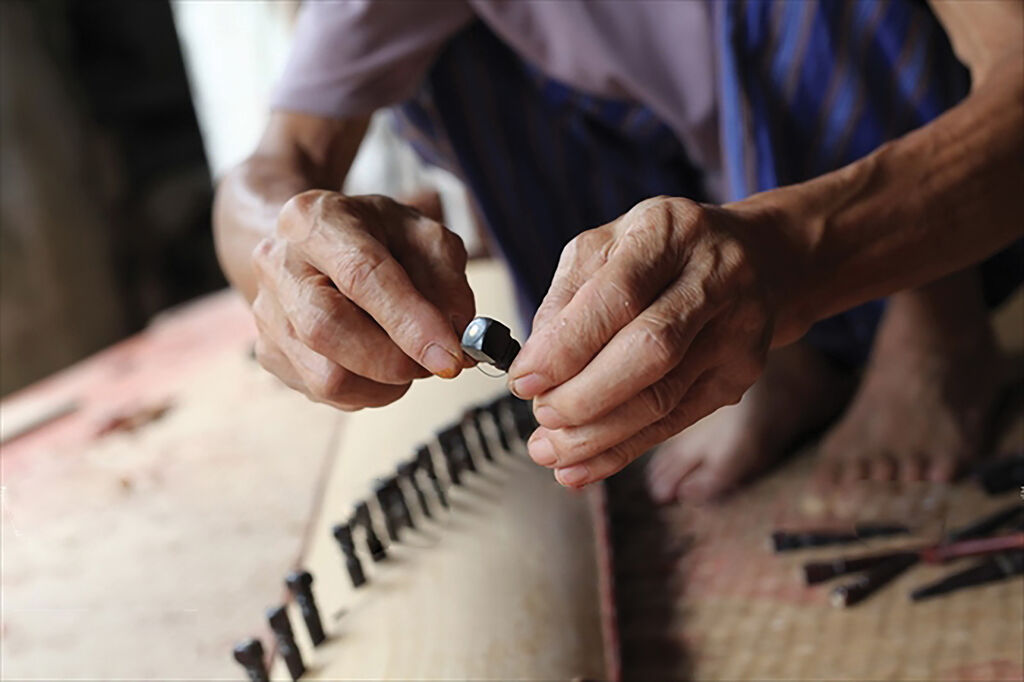 |
| Stringing a new 16-chord zither__Photo: Vietnam Pictorial |
It is believed that the founder of the craft was Dao Xuan Lan, a resident of Dao Xa village. In the early 19th century, driven by the passion for repairing and making musical instruments, he travelled far and wide for many years to learn how to make different types of folk musical instruments. When returning home, he passed the craft on to his descendants and other villagers. As time went by, the folk musical instrument craft gradually spread throughout Dao Xa village. In the mid-19th century, talented Dao Xa musical instrument makers brought their families to Thang Long (now Hanoi) to set up their guild called Hang Dan street, which was later merged into Hang Quat street in the Hanoi Old Quarter. Many skillful makers were chosen to make folk musical instruments for the Hue royal palace. In the 20th century, almost all workers of musical instrument facilities in Hanoi came from Dao Xa village. One of Dao Xa musical instrument makers, Dao Van Soan, was bestowed the honorary titles of National Folk Artisan and Hanoi’s Emeritus Artisan.
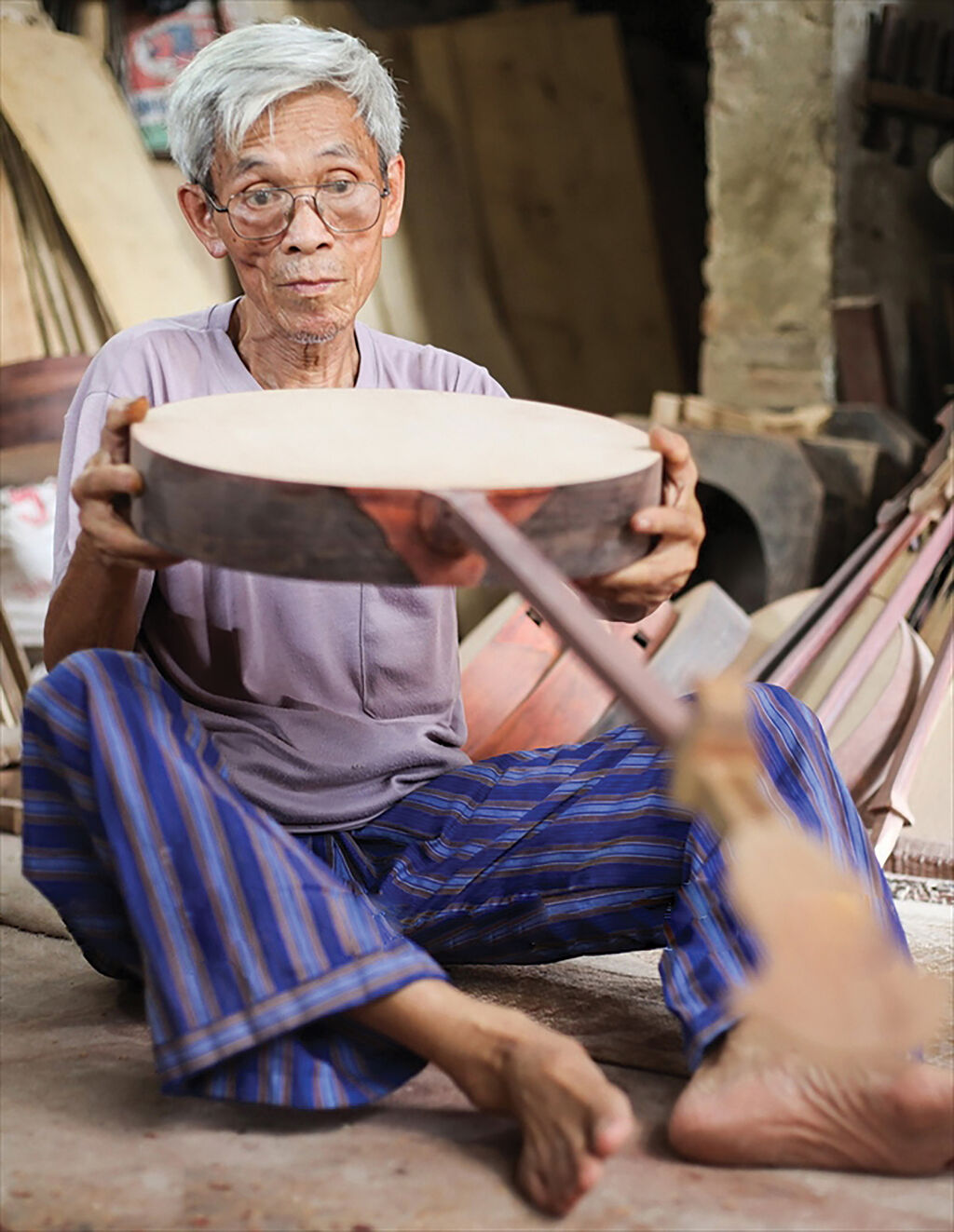 |
| Late Artisan Dao Van Soan__Photo: Vietnam Pictorial |
Today, Dao Xa village honors Dao Xuan Lan with a road bearing his name. Annually, on the 15th of the ninth lunar month - the death anniversary of Dao Xuan Lan, musical instrument makers in the village and from all over the country gather at the village’s temple to hold an incense-offering ceremony to show their gratitude and respect to the founder of the craft.
Handmade craft art and techniques
The success of a folk musical performance depends on the talent of not only an instrumentalist but also the maker of the musical instrument. To help the instrumentalists achieve emotional climaxes and ecstasies upon their performances on stage, Dao Xa craftsmen, although having no musical theory knowledge, can turn insentient materials into folk musical instruments that please their instrumentalists. Thanks to the craft know-how that has been passed down from their predecessors through practice, the craftsmen even can make instruments that look identical to but sound different from the others of the same type. The instruments made for northern singers produce deeper sounds to match with cheo (traditional opera singing) or chau van (ceremonial singing) voices while those made for southern singers have clearer and more melodious sounds to match cai luong (reformed opera) singing style.
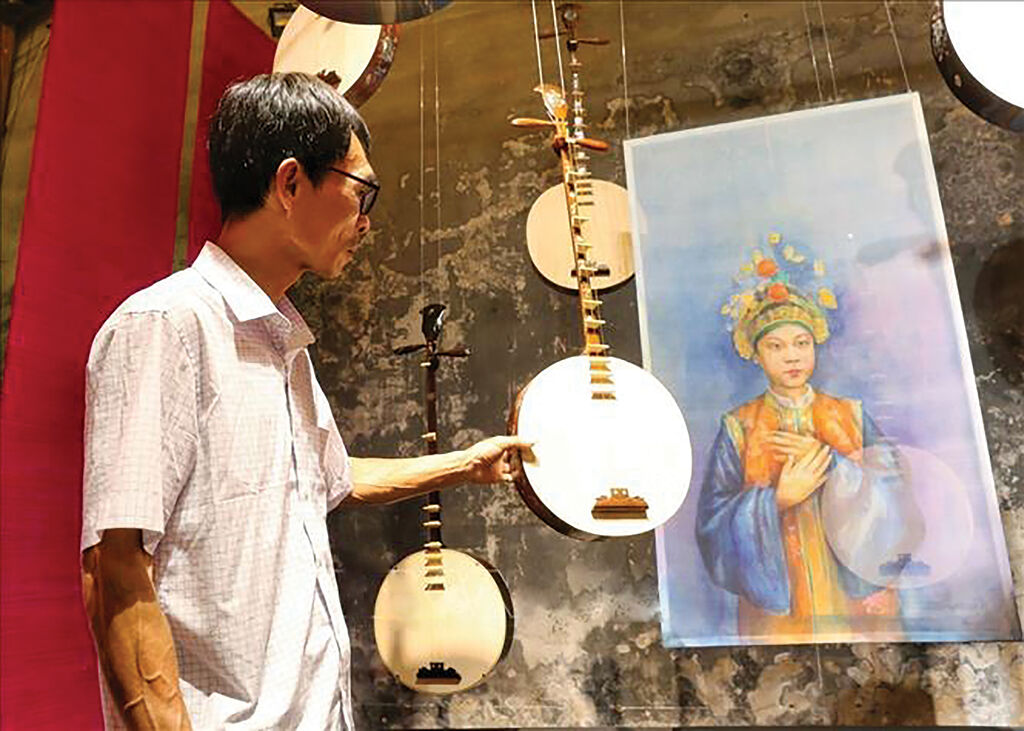 |
| Craftsman Dao Anh Tuan, son of late Artisan Dao Van Soan, introduces a moon-shaped lute with two strings__Photo: Tuan Duc/VNA |
In the past, Chinese parasol tree and Siamese rosewood were considered to be the best types of timber to make folk musical instruments. Nowadays, Dao Xa craftsmen use mahogany, ebony, rosewood and even python skin under their customers’ orders. With different types of timber, Dao Xa craftsmen use their skillful hands and sensitive ears alongside their talent in carpentry to make many instruments with magic sounds.
The making of an instrument by hand consists of several steps which require diligence, meticulousness, passion and love as well as experiences of a craftsman. It may take a month, even months, for a maker to finish a single instrument. Take the ty ba for example, a single piece of Chinese parasol tree timber needs to be collected and then dried for two to three years before it can be used. Next, a number of steps have to be followed, including splitting, carving and sanding, to shape the body, make the neck, and install strings. It is then sanded again and inlaid with mother-of-pearl. The instrument must have its sound tested before given to its owner.
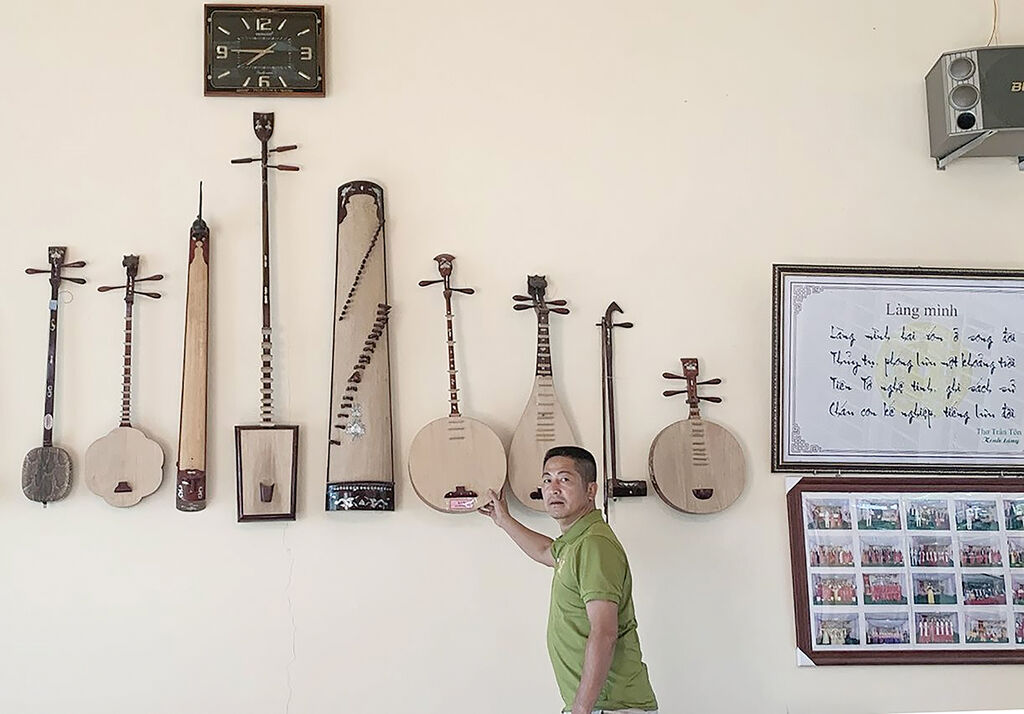 |
| Folk musical instruments made by late Emeritus Artisan Dao Van Soan are on display at the village’s communal house__Photo: https://nhipsonghanoi.hanoimoi.vn/ |
The craft of making folk musical instruments in Dao Xa village has experienced its ups and downs, and maintaining the craft through fluctuations has proved the love for their fatherland by the villagers here. They continue to work diligently everyday with ordinary materials and simple tools like saws, chisels, gouges and string materials to preserve the sound of the soul of the nation.- (VLLF)









